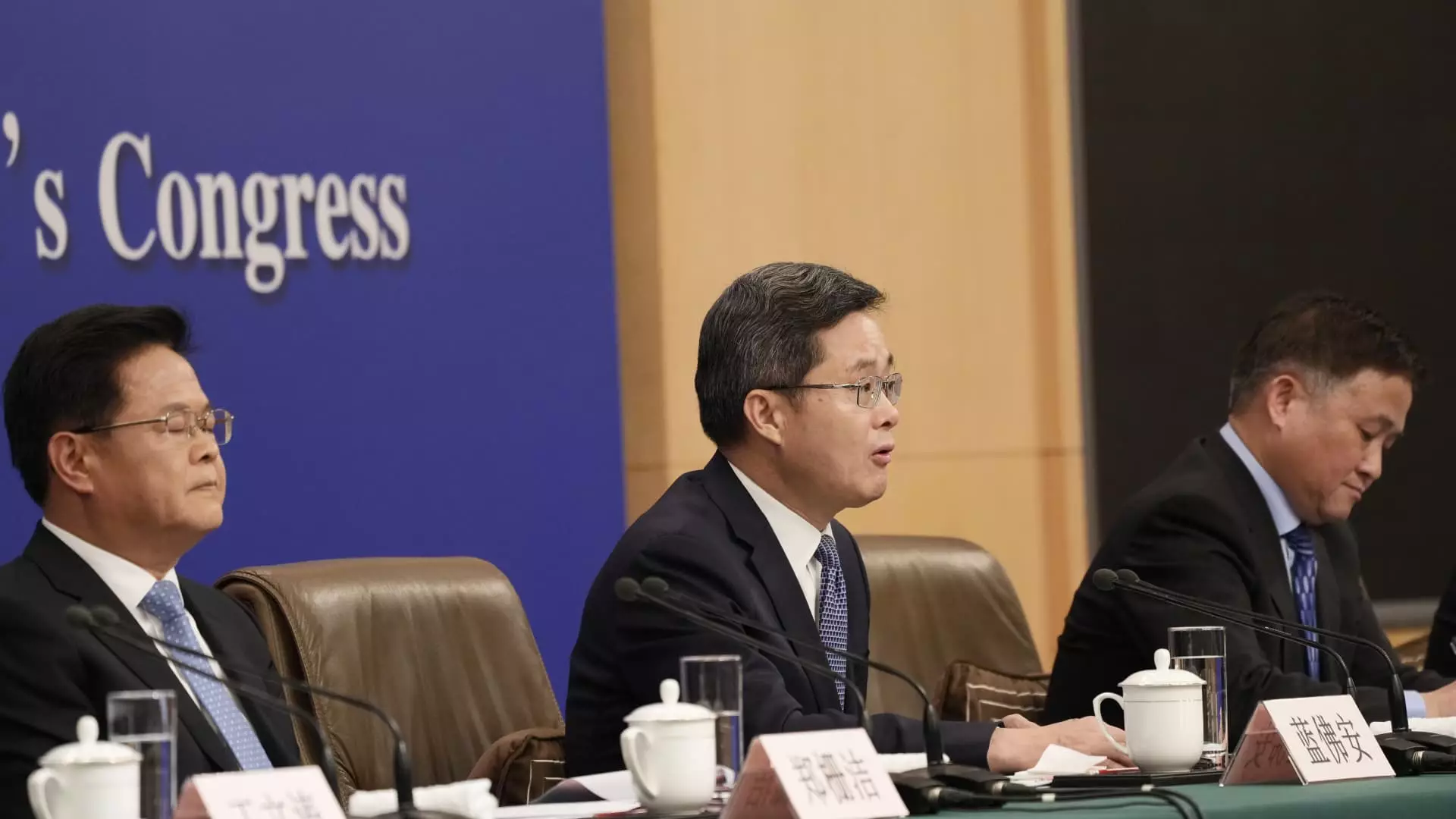China stands at a crossroads as its economic dynamics evolve amidst global uncertainties and internal pressures. The recent remarks from Lan Fo’an, the country’s Minister of Finance, during a weekend press conference have added layers to the conversation surrounding Beijing’s fiscal strategies. With China grappling with a combination of sluggish retail sales, a protracted real estate slump, and a GDP growth rate that is teetering just above 5%, the government is faced with pressing issues that require immediate and effective intervention.
In a time characterized by modest consumer spending and a hesitant property market, the Chinese economy’s vitality is under scrutiny. The Minister highlighted possibilities for increasing national debt and the deficit—suggesting that additional fiscal stimulus may be on the horizon. Economists are clamoring for a more proactive approach, yet the government has yet to provide a clear strategy, explaining that discussions are ongoing.
Lan detailed four key policy areas that have reached a stage where decisions are imminent. These policies primarily focus on alleviating local government debt risks, stabilizing the real estate sector, bolstering support for major state-owned banks, and enhancing youth employment opportunities. The emphasis on local governments is particularly significant, as these entities have been grappling with mounting fiscal pressures and liabilities, exacerbated by the ongoing economic challenges.
Analysts have called for substantial fiscal support, estimating that China may require anywhere from 2 trillion yuan ($283.1 billion) to over 10 trillion yuan in stimulus to effectively stimulate the economy. However, the path to enacting such measures is complex and necessitates parliamentary approval. This is a critical point, as any delay or obstruction in government sanctioning could stall potential relief efforts.
Notably, in a meeting led by President Xi Jinping in late September, authorities concurred on the need to strengthen both monetary and fiscal support. However, detailed implementation strategies remained obscured. The anticipated meeting of China’s parliament later this month could be a crucial juncture for decisive actions relating to fiscal policy. Analysts stress that the effectiveness of any stimulus is not solely contingent on its magnitude; the allocation and utilization of these funds are equally vital.
For instance, if the allocation is primarily directed towards stabilizing local government finances, it may not effectively spur broader economic growth. In contrast, an investment aimed at enhancing consumer spending could invigorate the economy in a more sustainable manner.
The week following the recent national holiday saw mainland Chinese stocks exhibit heightened volatility. This behavior signals investor apprehension regarding the stability and sustainability of the so-called stimulus-driven rally from late September. The rally witnessed the CSI 300 index enjoying its best week since 2008, predominantly fueled by investor optimism stemming from perceived governmental intervention.
Nevertheless, the market’s fluctuating performance post-holiday reflects a cautious outlook. It suggests that while initial enthusiasm may have driven stock prices higher, lingering concerns about the effectiveness of proposed measures are creating a jittery market atmosphere. With important economic data expected on October 18, including the release of the third-quarter GDP figures by the National Bureau of Statistics, stakeholders are poised to gauge the results that will shape China’s economic projections for the remainder of the year.
As China continues to navigate the choppy waters of its economic landscape, the future will depend significantly on the decisions made by its policymakers. Whether the government opts for bold fiscal measures or takes a more conservative approach will have far-reaching effects on recovery efforts and economic rejuvenation. The effectiveness of any proposed stimulus will ultimately hinge on its design, scope, and implementation, reinforcing the notion that strategic planning must accompany financial infusion.
While there appears to be an openness to fiscal expansion, translating intentions into actionable policies will be crucial for stabilizing China’s economic trajectory. The forthcoming weeks will shed light on how the government plans to address the myriad challenges ahead and whether it will succeed in fostering a more resilient economic environment.


Leave a Reply